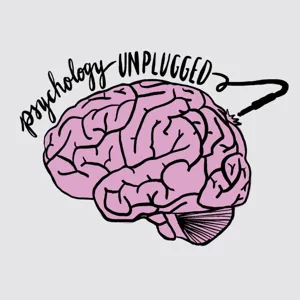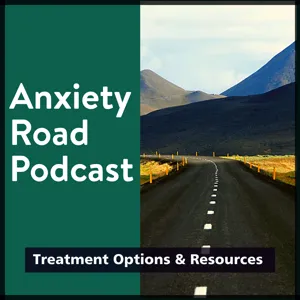Podcast Summary
Understanding Nonsuicidal Self Injury (NSSI): NSSI is intentional self harm without suicidal intent, affects many beyond borderline personality disorder, and understanding it is vital for accurate diagnoses and treatments.
Nonsuicidal self injury (NSSI) is a condition for further study in the Diagnostic and Statistical Manual of Mental Disorders (DSM), and it's important for clinicians to be aware that not all individuals who engage in self injurious behaviors have borderline personality disorder. NSSI involves intentional self inflicted damage to the body with the expectation of minor to moderate harm, and it's not a suicide attempt. While it might be confusing why someone would deliberately harm themselves without suicidal intent, all behaviors have purpose and are reinforced by our brain's reward system. NSSI affects a significant number of individuals who are not diagnosed with borderline personality disorder, and clinicians should avoid jumping to conclusions and prematurely diagnosing individuals based on this behavior alone. Understanding NSSI is crucial for providing accurate diagnoses and effective treatments.
Self-injury as a coping mechanism: Self-injury can provide relief from negative emotions or cognitive states and is often reinforcing due to the release of dopamine.
Self-injurious behaviors, although they may seem irrational or even self-destructive from an outside perspective, can make perfect sense to the individual engaging in them. These behaviors serve as a coping mechanism to obtain relief from negative emotions or cognitive states, such as interpersonal difficulties or feelings of depression, anxiety, or tension. The individual may intentionally inflict pain on themselves as a diversion tactic to focus on the physical pain rather than the psychological distress. This behavior can be reinforcing due to the release of dopamine, providing a sense of relief and reinforcement for the individual. It's important to note that the absence of suicidal intent is a key characteristic of this disorder. From a clinical perspective, it's crucial to implement harm reduction strategies and focus on reducing the frequency, duration, and severity of self-injurious behaviors to ensure the individual's safety.
Understanding the reasons behind self-injury: Self-injury causes significant distress and interference, even if not acted upon, and understanding why individuals engage in this behavior is essential for effective treatment.
Self-injury is a complex behavior driven by both emotional and cognitive distress. The urge to engage in self-injury can be overwhelming and compel individuals to act, despite the negative consequences. Understanding the "why" behind self-injury is crucial for treatment, as it provides insight into the individual's thought processes. Self-injury that is not acted upon can still cause significant distress and interference in daily life. It's important to note that socially acceptable forms of body modification, such as tattoos and piercings, are different from self-injury. The behavior or its consequences cause clinically significant distress or interference in important areas of functioning. Individuals who self-injury may display certain patterns, such as hiding their injuries or seeking attention. If you or someone you know is struggling with self-injury, it's important to seek help from a mental health professional.
Understanding Nonsuicidal Self-Injury: Coping Mechanism or Cry for Help?: Nonsuicidal self-injury is a complex behavior, often starting in early teens, driven by theories of reinforcement, and requires empathy and support rather than judgment.
Nonsuicidal self-injury is a learned behavior that often starts in early teens and can continue for years. It's important to understand that individuals engaging in this behavior are not intending to die, but rather seeking relief or attention. This disorder is prevalent, particularly among females, and can be explained by theories of positive or negative reinforcement. Individuals may punish themselves through self-injury as a way to feel deserved relief or attention, or as an expression of anger. It's crucial to recognize that this behavior is not a choice, but rather a coping mechanism. Society's judgment can make it difficult for those suffering from mental health issues to seek help and be understood. The Internet can be both a blessing and a curse, as it provides access to information on self-injurious behaviors, but also perpetuates the stigma surrounding mental health. It's essential to give mental health a voice and legitimacy, and to remember that individuals struggling with self-injury deserve empathy and support.
Self-injurious behaviors are complex and multifaceted: Self-injury is a deliberate act to transfer emotional pain to physical pain, not a cry for attention, and can be reduced or eradicated with proper understanding and intervention.
Self-injurious behaviors, such as nonsuicidal self-injury, are complex and multifaceted. Ford's theory that pressure turned inwards can lead to self-harm is supported by research, which suggests that individuals may engage in self-punitive actions as a form of self-punishment or self-deprecation. These behaviors are not a cry for attention, but rather a deliberate act to transfer emotional pain to physical pain. It's important to understand the functional consequences and the reasons behind these behaviors, whether you're a clinician, someone struggling with these behaviors, or a family member. Self-injurious behaviors are not a result of psychosis, delirium, substance intoxication, substance withdrawal, neurodevelopmental disorders, autism, intellectual disability, or trichotillomania. They are a separate disorder that should be further reviewed and considered for inclusion in the diagnostic manual. These behaviors can be reduced and even eradicated with proper understanding and intervention.
Understanding Self-Injurious Behaviors: Self-injurious behaviors are often rooted in emotional pain, not a casual choice. They're coping mechanisms, not attempts to die. Approach with empathy and understanding.
Self-injurious behaviors, whether suicidal or nonsuicidal, often stem from significant psychological pain rather than a casual or enjoyable choice. It's crucial not to shame individuals engaging in these behaviors, but instead, explore the underlying reasons. Non-suicidal self-injury, specifically, is not an attempt to die, but rather a coping mechanism for emotional distress. The field of psychology could benefit from recognizing this as a distinct disorder, similar to Disruptive Mood Dysregulation Disorder, which was needed to address behavioral dysregulation not directly linked to depression. As mental health professionals, we strive to provide hope, inspiration, education, and knowledge to as many people as possible, despite the demands of our work. Self-injurious behaviors are a prevalent issue in psychotherapy, and it's essential to approach them with empathy and understanding.
Neuropsychological evaluations provide definitive answers and comprehensive explanations: Neuropsychological evaluations offer valuable diagnostic clarity, crucial for therapeutic and pharmacological perspectives, despite limitations of managed care and insurance.
While people may be complex, neuropsychological evaluations offer definitive answers and comprehensive explanations for various conditions. These evaluations are crucial for both therapeutic and pharmacological perspectives. Despite the limitations of managed care and insurance, the time and resources invested in such assessments provide valuable diagnostic clarity. Reach out for a neuropsychological evaluation through platforms like Psychology Today or email psychologyunplugged@outlook.com. Look out for upcoming trainings, seminars, and clinical supervision sessions. As individuals, we must prioritize self-care and connectivity, and if possible, attend to personal matters like visiting family or seeing favorite artists in person. Drs. Julie and John are available for various services in your town, community, or country. Stay well and take care of each other.




